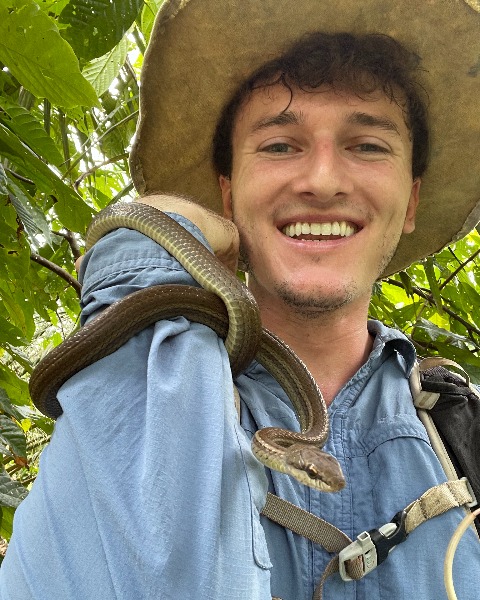Back
Contributed Talk
Session: : Agriculture 6
COS 116-1 - Anolis lizards reveal conservation benefits of transforming oil palm monocultures into diversified polycultures
Tuesday, August 8, 2023
3:30 PM - 3:45 PM PDT
Location: B110

Edgar Francisco
Stanford University, United States
- RD
Rodolfo Dirzo
Stanford University
Stanford, California, United States
Presenting Author(s)
Coauthor(s)
Abstract: Growing global demand is creating an oil palm (OP) boom in Latin America, where plantations cause habitat fragmentation and deforestation, driving biodiversity loss. Co-designed with eight Costa Rican farming families, the Laboratorio Experimental de Palma Africana investigates the consequences of transforming oil palm monocultures into diversified polycultures. We trace the socioeconomic history of the palm industry in Costa Rica before detailing how Anolis lizards can serve as a lens for understanding the effects of land use change on biodiversity. To investigate anole responses to OP diversification, we conducted 192 visual encounter surveys in eight pairs of experimental OP farms, half-hectare monocultures bordering half-hectare polycultures, in which OP is intermingled with cacao, vanilla, banana, and timber species. In the farms, we recorded 1,656 anoles across seven species, with 65% of individuals found in the polycultures. We show that Shannon diversity (q=1) and Simpson diversity (q=2) significantly increase from monocultures to polycultures to forests, likely by providing increased canopy closure and leaf litter depth. Accordingly, we found that diversified OP farms support endemic and forest-dependent A. polylepis and A. osa significantly more than the monocultures, which are dominated by disturbance-tolerant, A. limifrons. Additionally, we provide the first documented population of A. auratus in Costa Rica, a grassland species significantly associated with the monoculture farms. Finally, we surveyed adjacent forests using the same sampling effort (48 ha) to serve as a baseline of comparison. Forest-obligate species, A. capito and A. aquaticus, were never recorded in the experimental farms. Herpetofauna responses to OP diversification have not previously been examined. Given the rapid proliferation of oil palm throughout the tropics, our findings hold broad significance for understanding how diversification of OP landscapes becomes more hospitable for forest species and less prone to takeover by disturbance specialists.
